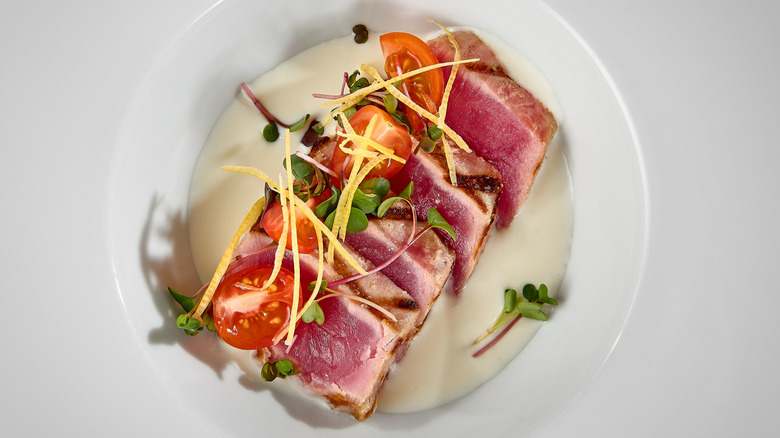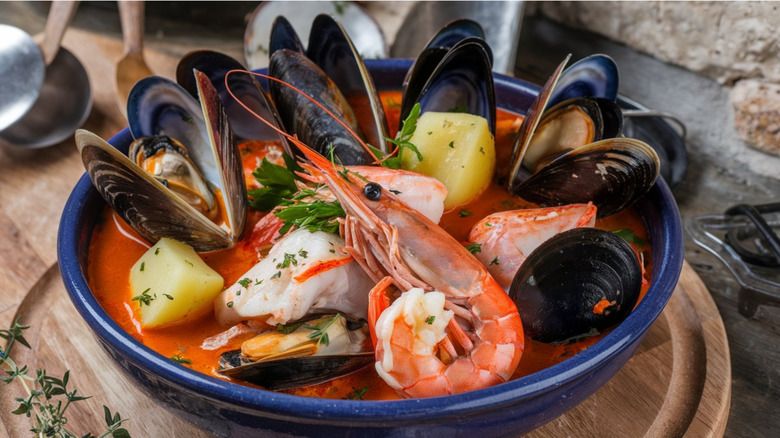The Seafood Restaurant Red Flag That Should Send You Running
Dining out at a restaurant is a once-in-a-while treat for many of us, and when it happens, expectations are high. Nobody wants to waste any extra dough they saved on subpar cuisine; folks who only eat out occasionally tend to be hyper-vigilant about restaurant red flags, like a very large menu. If you're dining out at a seafood joint, there is one red flag unique to this type of business that is worth watching out for.
After speaking with Maricel Gentile, the chef and owner of Maricel's Kitchen and author of "Maricel's Simply Asian Cookbook," we have to question whether bargain prices on seafood are really worth the cost. "Extremely low prices can be a red flag for freshness and sourcing," she said. You can always hop over to McDonald's for a fresh Filet-O-Fish if you just don't feel like cooking, but there are certain expectations regarding quality at a fancier sit-down restaurant. If it looks like you're getting a screaming deal, that could be a sign you're better off grabbing that fast food fish sandwich after all. "Quality seafood is costly from the start, and cutting corners on price often means it is frozen for long periods or lower-grade imports," Gentile said.
Still, that doesn't necessarily mean every restaurant attempting to make dishes affordable for its clientele is cheaping out on inferior products. According to Gentile, it can depend on what's in season, as well as your location. "Sustainable local catches and off-peak species can sometimes be offered at a fair price without compromising quality," she shared.
Location affects the price of seafood at restaurants
The unfortunate truth about seafood restaurants is that those of us in landlocked states are generally going to pony up more scratch for a decent meal, whereas lucky folks in coastal regions might be able to catch a deal. "A restaurant near a fishing port often has direct access to the freshest catch, which can mean better prices for higher-quality fish," Maricel Gentile explained. "Inland restaurants typically face higher costs due to shipping and handling. Those lower coastal prices are not about 'cheap' pricing; rather, they usually reflect excellent value for your money for the quality you are getting."
Gentile shared an anecdote from her time in France to illustrate when it's worth it to pay a little more for seafood. She recounted how the French view dining out, centered around the sophisticated seafood dish, bouillabaisse. "There, people will actually save up to have a really good bouillabaisse because it is so expensive to make with the freshest, highest-quality fish in the region," Gentile explained. "When it is inexpensive, it is often because frozen or lower-grade seafood is being used."
Looking out for seafood restaurant red flags, like low prices, is something Americans would do well to emulate. Bouillabaisse is famed for being an elegant luxury, and if it tastes like old seafood or freezer-burned fish, it's more than just disappointing. It feels like you've been had. "But when made properly with pristine local catch, it becomes a special-occasion dish worth every euro," Gentile said.

